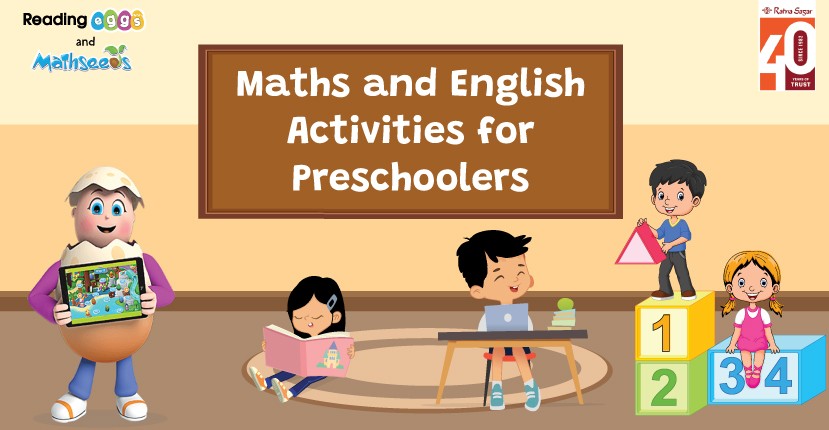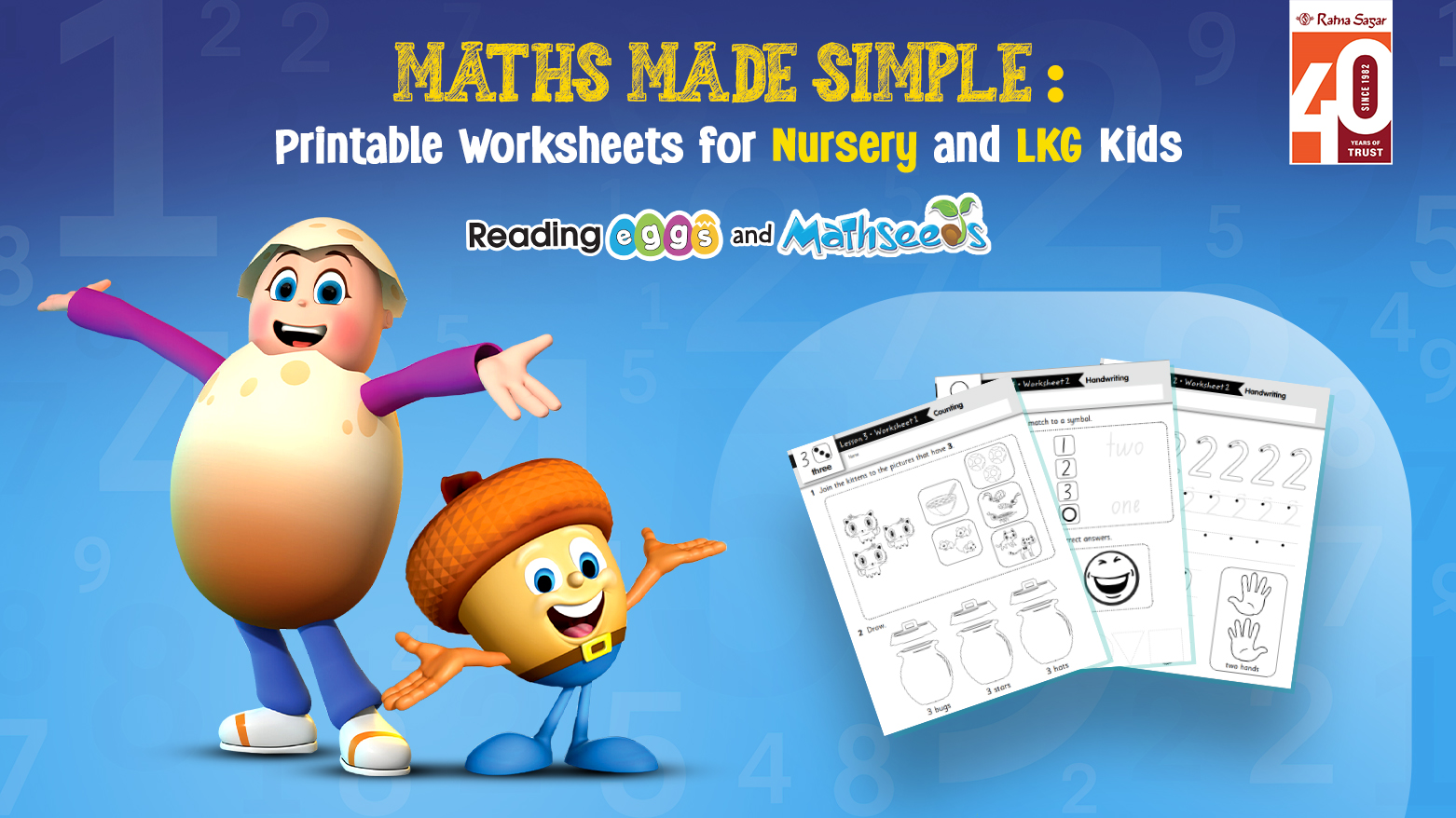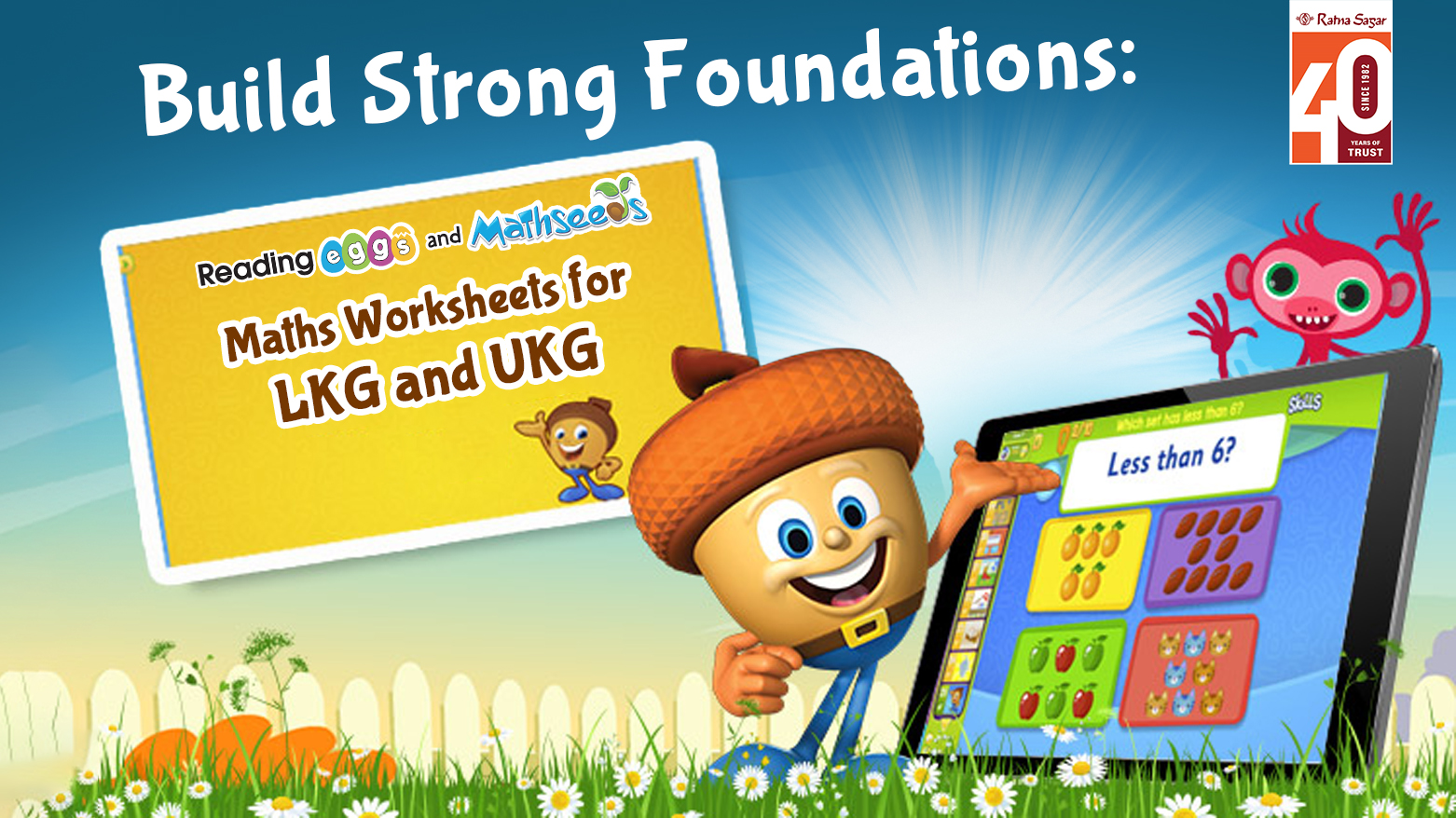Keeping the little ones engaged is a tough task. Leave them to their own devices for too long and they can make the skies fall. We are sure that you have thought a hundred times about how to make the children sit and do something that makes them learn important things. Well, we are here to help. In this blog, we offer some quick and fun Maths and English activities for your little preschoolers that can be done in 15 minutes or less:
Book 14 days FREE trial For Reading Eggs with Ratna Sagar
Let’s start off with Maths activities: Counting with Objects: Get your kids to find everyday objects like toys, buttons, cards or blocks. Spread them out on a table or the floor, creating an inviting display. Then, invite your children to join in the fun! As they pick up each item, ask them to count out loud, placing each one in a line or a pile. This hands-on approach reinforces counting skills and critical thinking. It is a delightful way to engage the students in a game of counting and let them enjoy it. Number Hunt: Write numbers 1-10 on separate index cards or sticky notes. Hide them strategically around the room, ensuring they're placed in areas accessible to the children. You can then invite your children to start a number scavenger hunt! As they eagerly search for each card, encourage them to identify and announce the numbers they find. This interactive approach sharpens their number recognition skills and transforms learning into a thrilling adventure. Shape Sorting: Use coloured construction paper and cut out various shapes like circles, squares, triangles and rectangles from different hues of paper. Spread them out on a flat surface, inviting your child to explore. Encourage them to sort the shapes into groups based on their similarities. This hands-on activity improves their shape recognition skills and makes them compare objects. Pattern Play: Create simple patterns using objects like coloured blocks or stickers Begin by creating a simple pattern using colourful blocks or stickers, such as red, blue, red, blue. Display the pattern clearly for your child to see, then encourage them to continue the sequence or even invent their own unique pattern. This activity enhances their ability to recognize and extend patterns and fosters their imagination and problem-solving skills. As they engage with patterns, they develop a deeper understanding of orders and relationships, laying a strong foundation for future mathematical concepts. Counting Song: Elevate counting into a joyous musical experience with the timeless tradition of singing counting songs! Choose a lovely melody to fill the air. As you sing together, use your fingers to represent each number, adding a tactile element that enhances learning. With each verse, your child can visually track the numbers while actively participating in the song, reinforcing numerical concepts in a fun and memorable way. Now, let’s move on to English activities: Letter Recognition: Present your child with different letters of the alphabet, encouraging them to name each letter aloud or identify objects around the room that begin with the corresponding letter sound. This reinforces letter recognition and also promotes phonemic awareness as they associate sounds with letters. By incorporating objects from their surroundings, the activity becomes personalised and relevant, making learning letters both meaningful and enjoyable. Rhyming Game: Exploring rhyming words with your child! Begin by saying a word, such as "cat," and encourage your child to brainstorm words that rhyme with it, like ‘bat,’ ‘hat,’ and ‘sat.’ Take turns coming up with rhyming words, fostering creativity and phonemic awareness. This interactive activity not only strengthens your child's vocabulary but also sharpens their ability to recognise and manipulate sounds in words. Sight Word Hunt: Transform sight word practice into an exciting scavenger hunt adventure for your child! Write simple sight words like ‘the,’ ‘and,’ ‘it,’ and ‘is’ on index cards or sticky notes, then hide them strategically around the room. Encourage your child to explore their surroundings, eagerly searching for each hidden word. As they discover a word, invite them to read it aloud, reinforcing their sight word recognition skills in a fun and interactive way. Letter Tracing: Encourage your child's fine motor skills and letter recognition with a simple yet effective tracing activity! Offer them a piece of paper and a crayon or marker, then write a few letters of the alphabet in large print. Guide your child to trace over the letters with their crayon, providing gentle support and encouragement as needed. This hands-on exercise not only helps them practise proper letter formation but also reinforces letter identification. Through tracing, your child gains confidence in their writing abilities while strengthening their foundation in literacy. Plus, the tactile experience adds an extra element of sensory engagement, making learning letters both enjoyable and effective. These activities are sure to keep your little ones engaged and learn while playing. To complement your child’s playtime with a learning adventure, you can even gift them Reading Eggs and Mathseeds. It has interesting worksheets, educational games, quizzes and reading and maths activities that strengthen every child’s foundation in literacy and numeracy skills. You can check out the links below to learn more about the program. See you again with another eventful blog to help you in your parenting and your child’s educational journey.
Book 14 days FREE trial For Reading Eggs with Ratna Sagar
https://re.rsgr.in/blog/fln-course-for-schools/ https://re.rsgr.in/blog/why-creativity-matters-so-much-for-kids/ https://re.rsgr.in/blog/preschool-reading/ https://re.rsgr.in/blog/worksheet-for-nursery-maths/


